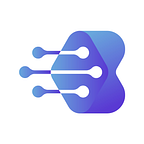Unlocking the Potential of Machine Learning: The Benefits for the Health Sector
The potential of machine learning is astounding, and its applications are far-reaching. In the healthcare sector, machine learning can be used to improve diagnosis accuracy, better analyze health data, and provide more effective treatments. This article will explore the benefits of machine learning for the health sector, with a focus on data analysis, diagnosis, and treatment.
Introduction
Machine learning (ML) is a type of artificial intelligence that enables computers to learn from experience and data. It is used to identify patterns and make predictions, allowing computers to be used to automate complex tasks.
Put simply, machine learning is the process of teaching a computer to learn on its own. It is a powerful tool that can be used to solve many of the healthcare sector’s challenges.
Overview of Machine Learning’s Potential Benefits in the Health Sector
As machine learning algorithms become more advanced, the potential for healthcare applications of machine learning is increasing. As the field progresses, machine learning is being used to improve data analytics, diagnosis accuracy, and treatment effectiveness. By leveraging the power of machine learning, healthcare providers can gain access to valuable insights that can help improve patient care and streamline operations.
Machine Learning in Data Analysis
One of the most useful applications of machine learning in the healthcare sector is data analysis. Machine learning algorithms can be used to analyze large, complex datasets with detailed patient information, helping to uncover trends and insights.
With machine learning, the data can be analyzed more quickly and accurately than ever before.
Benefits of Machine Learning in Data Analysis
The benefits of machine learning for data analysis are numerous. By leveraging machine learning, healthcare providers can quickly and accurately identify trends in patient data, enabling them to make better-informed decisions.
Machine learning can also be used to personalize treatments, as it can identify correlations between patient characteristics and outcomes. Furthermore, machine learning can be used to identify patient risk factors, enabling healthcare providers to intervene earlier and prevent illness or injury.
Examples of Machine Learning in Data Analysis
A great example of machine learning in data analysis is the use of machine learning algorithms to identify at-risk patients. By analyzing patient data, such as medical history, medications, and lab results, machine learning algorithms can flag patients who are at a higher risk for certain illnesses or conditions. This can enable healthcare providers to intervene earlier, potentially preventing the onset of illness or injury.
Machine Learning in Diagnosis
Another area where machine learning has shown promise is in the diagnosis of medical conditions. By leveraging machine learning algorithms, healthcare providers can greatly increase the accuracy of diagnosis, as the algorithms can identify subtle patterns in the data and make more accurate predictions.
Benefits of Machine Learning in Diagnosis
The benefits of machine learning for diagnosis are considerable. By using machine learning algorithms, healthcare providers can increase the accuracy of their diagnoses and reduce the time required for diagnosis. Furthermore, machine learning algorithms can be used to identify rare and hard-to-diagnose conditions, enabling healthcare providers to intervene earlier and provide more effective treatments.
Examples of Machine Learning in Diagnosis
A great example of machine learning in diagnosis is the use of machine learning algorithms to diagnose eye diseases.
By analyzing patient data, such as medical history and lab results, machine learning algorithms can identify subtle patterns in the data, allowing them to make more accurate predictions.
This can enable healthcare providers to identify and diagnose eye diseases earlier, potentially saving the patient’s vision.
Machine Learning in Treatment
The final area where machine learning can be used to benefit the health sector is in treatment. By leveraging machine learning algorithms, healthcare providers can optimize treatment plans, providing more effective and personalized treatments.
Final Thoughts on Unlocking the Potential of Machine Learning
The potential of machine learning is vast, and its applications are far-reaching. From healthcare to finance, education, and entertainment, machine learning is proving to be an incredibly useful tool.
In the healthcare sector, machine learning is being used to improve diagnosis accuracy, better analyze health data, and provide more effective treatments.
By unlocking the potential of machine learning, healthcare providers can gain access to valuable insights that can help improve patient care and streamline operations.
Conclusion
In conclusion, machine learning has the potential to revolutionize the healthcare sector.
By leveraging machine learning algorithms, healthcare providers can improve data analysis, increase diagnosis accuracy, and optimize treatments.
Furthermore, machine learning can be used to personalize treatments, enabling healthcare providers to provide more effective and individualized treatments.
